
Conjugación Try 🔸 Verbo inglés en todos los tiempos y formas Conjugar
Save Time and Shop Online for Your Kitchen. Free UK Delivery on Eligible Orders!
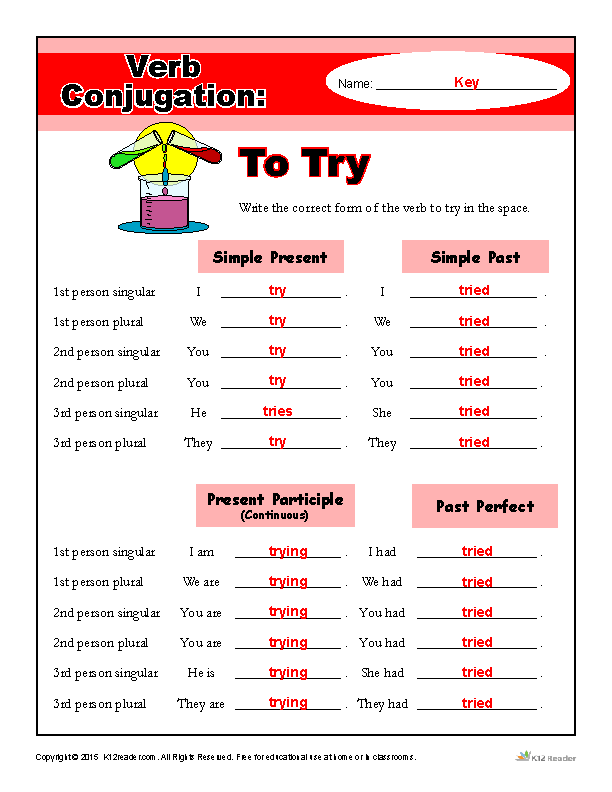
Verb Conjugation Worksheet To Play Grammar Worksheets
10.04.2020 The English verb 'try' is pronounced as [traɪ]. Related to: regular verbs. 3 forms of verb try: Infinitive (try), Past Simple - (tried), Past Participle - (tried). Here are the past tense forms of the verb try 👉 Forms of verb try in future and past simple and past participle. What is the past tense of try.
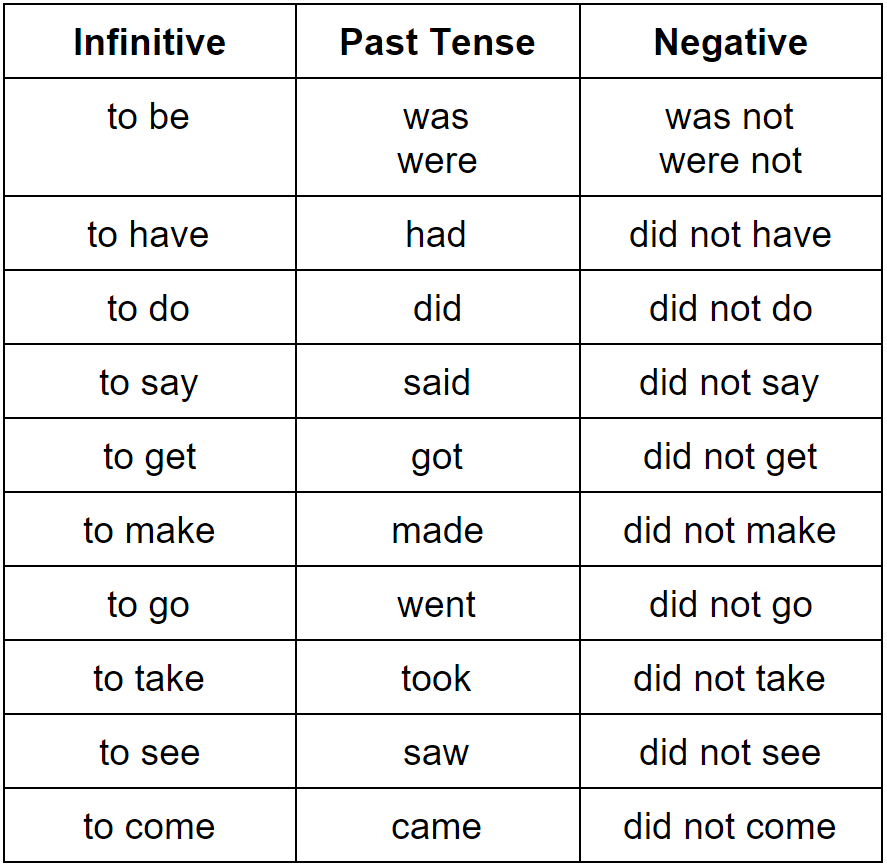
Simple Past Tense TO weBBie
The past simple is the most common way of talking about past events or states which have finished. It is often used with past time references (e.g. yesterday, two years ago). Please explain past events or states! A past event could be one thing that happened in the past, or a repeated thing. I stopped at a zebra crossing.
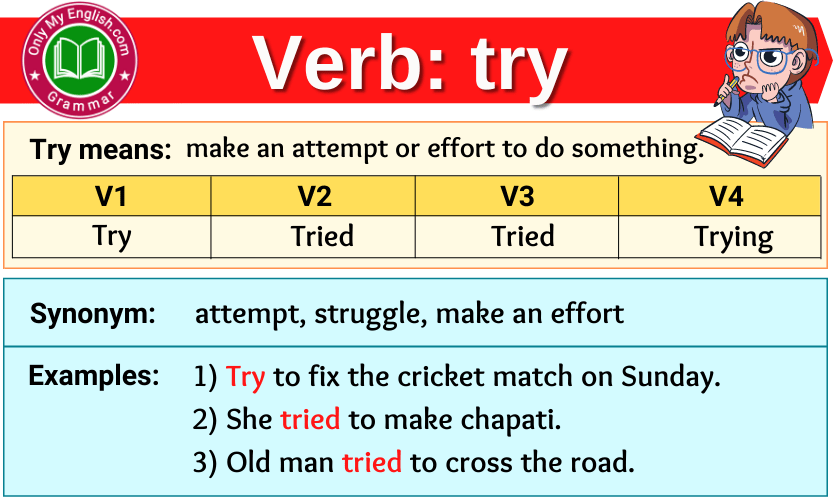
Try Verb Forms Past Tense, Past Participle & V1V2V3 »
Try: 2. Simple Past: Tried: 3. Past Participle: Tried: 4. Present Participle: Trying: 5. 3rd Person Singular: Tries: Table of Contents. Try past tense; Try past participle; Try verb forms V1 V2 V3 V4; Conjugation of Try. More verb past tense ; Try past tense. Tried: Tried is the past tense of the word try.

BASIC ENGLISH I Simple Past Tense of the other verbs
Try in Past Continuous (Progressive) Tense. Singular. Plural. I was trying. We were trying. You were trying. You were trying. He/She/It was trying. They were trying.
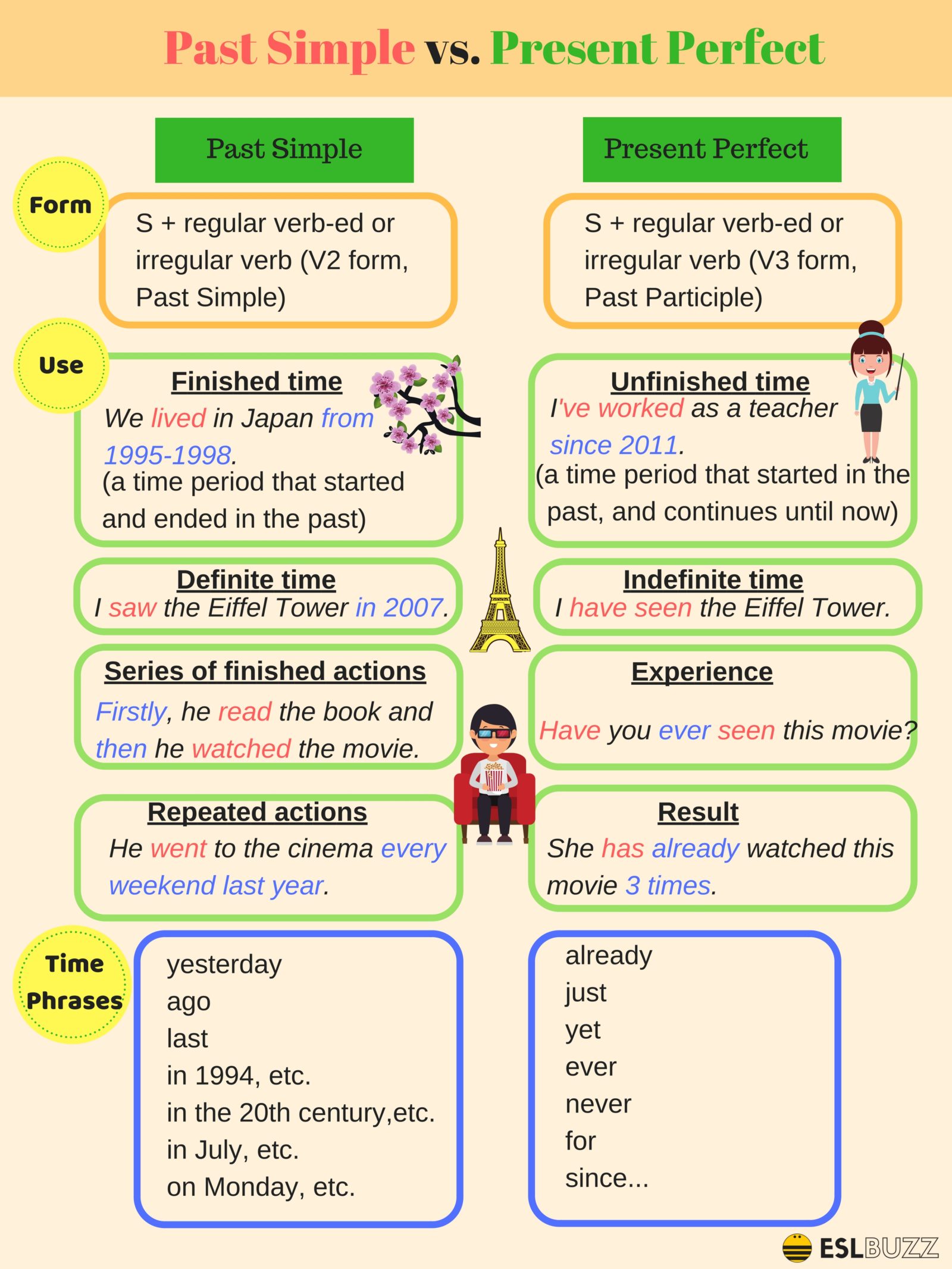
English Tenses Past Simple and Present Perfect ESLBUZZ
Try Conjugation Indefinite / Simple Present Tense. I try to convince. We/You/They try to convince. He/She/It/Adam tries to convince. Present Continuous Tense. I am trying to convince. We/You/They are trying to convince. He/She/It/Adam is trying to convince. Present Perfect Tense. I have tried to convince. We/You/They have tried to convince.

Verb use in past simple
Past simple Past simple Level: beginner With most verbs, the past tense is formed by adding -ed: called liked wanted worked But there are a lot of irregular past tense forms in English. Here are the most common irregular verbs in English, with their past tense forms: We use the past tense to talk about: something that happened once in the past:
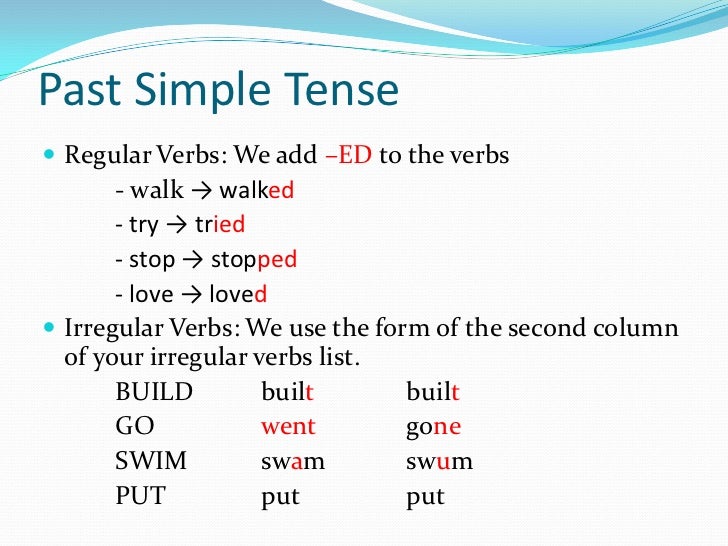
Past simple past continuous (3º eso)
'try' is the model of its conjugation. infinitive: present participle: past participle: (to) try trying tried definition in Spanish in French in Italian Indicative Perfect tenses Continuous (progressive) and emphatic tenses Compound continuous (progressive) tenses Conditional Imperative Subjunctive
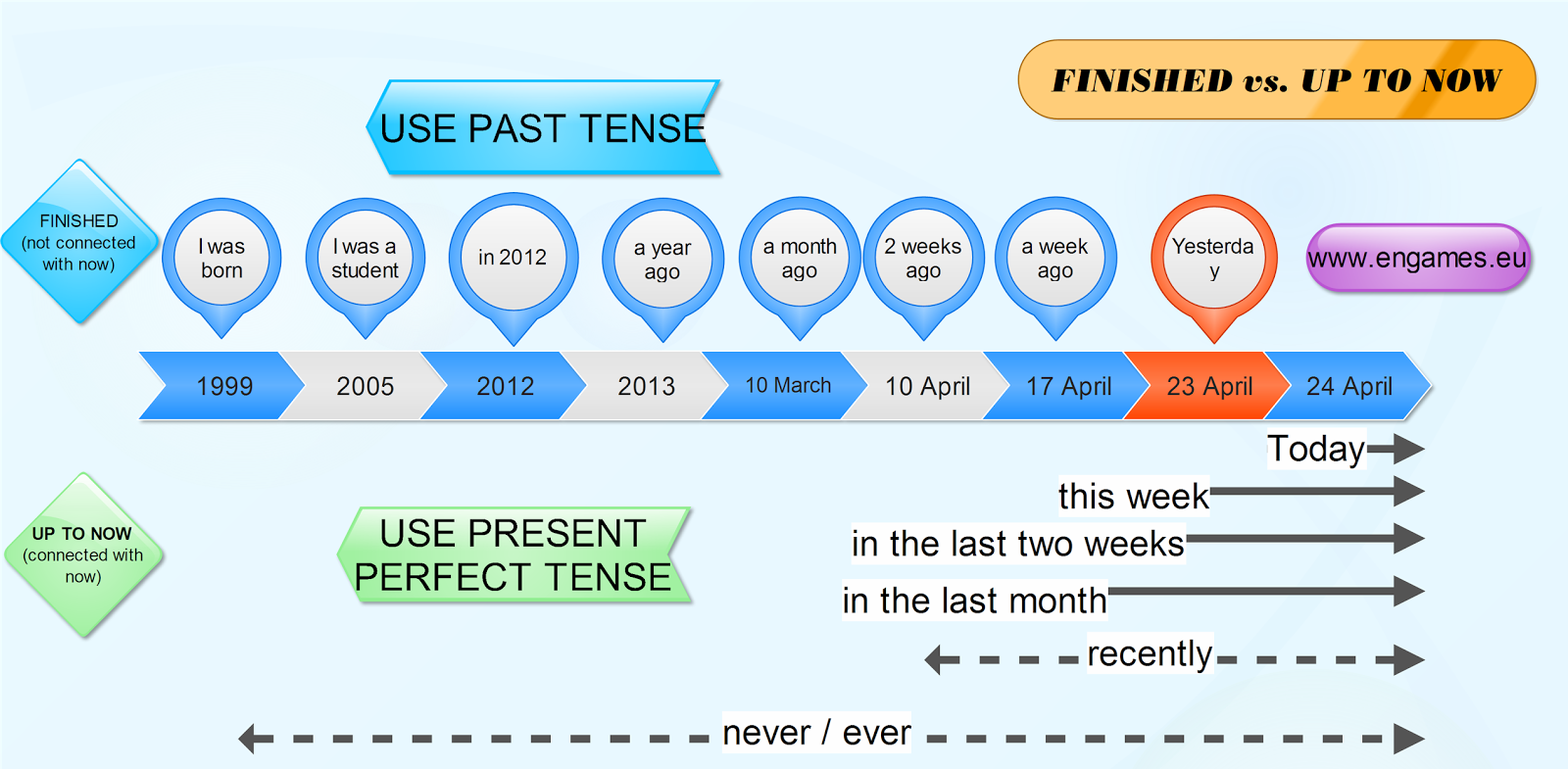
Keep your English alive! PAST SIMPLE vs. PRESENT PERFECT
Simple Past Tense He/She/It tried. I tried. You/We/They tried. Past Continuous Tense He/She/It was trying. I was trying. You/We/They were trying. Past Perfect Tense He/She/It had tried. I had tried. You/We/They had tried. Past Perfect Continuous Tense He/She/It had been trying. I had been trying. You/We/They had been trying. Simple Future Tense
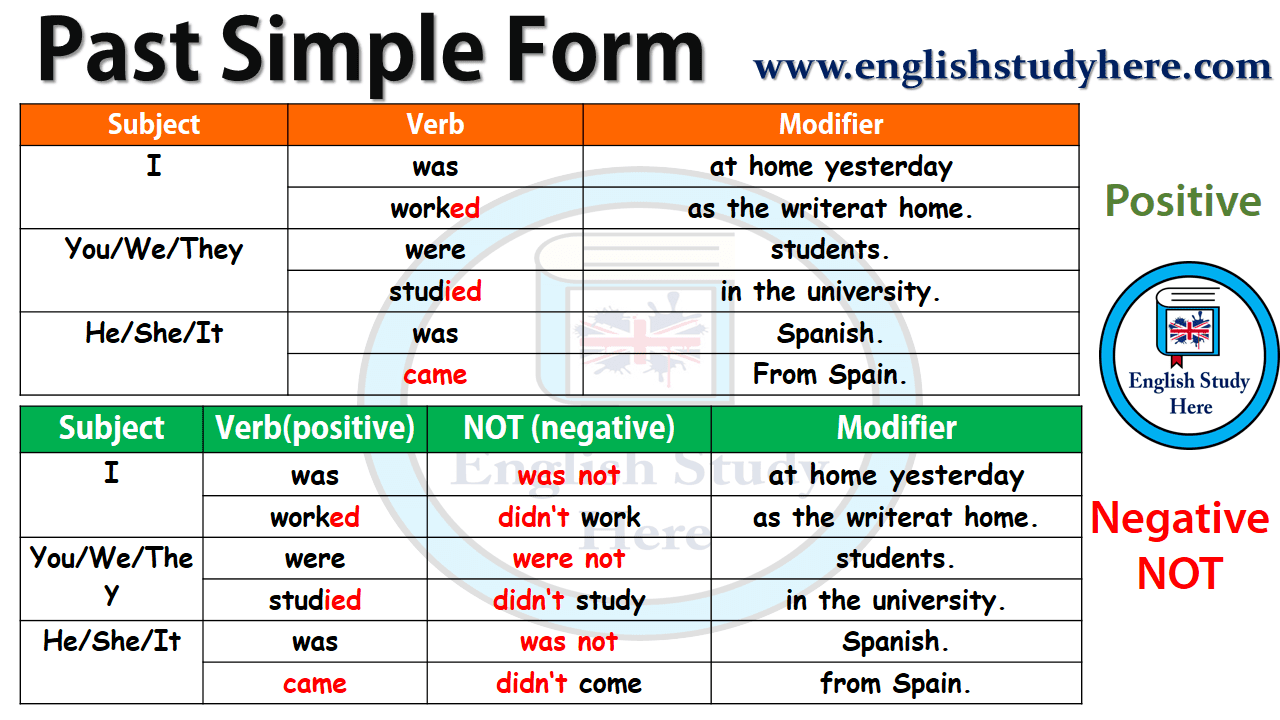
A2 UPDATED PAST SIMPLE EXPLANATION
Conjugation verb try X English Conjugate Toolbox: Models British vs. American English Auxiliaries, modals Irregular verbs try Infinitive to try Preterite tried Past participle tried Model : cry Auxiliary : have, be Other forms: try oneself / not try Contractions Advertising Indicative Present I try you try he/she/it tries we try you try they try
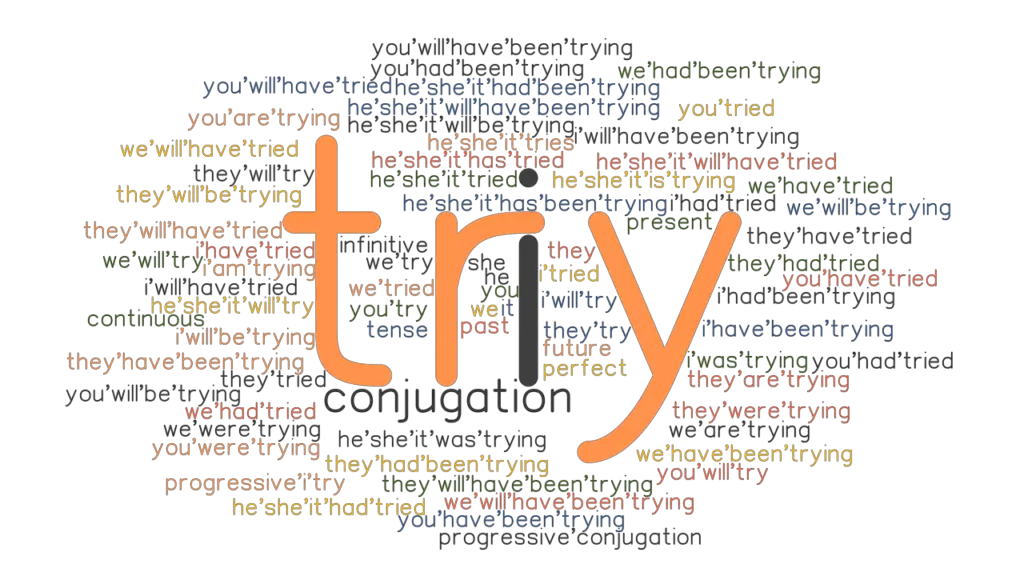
Try Past Tense Verb Forms, Conjugate TRY
The past simple tense (also called the simple past or preterite) is used to describe an action or series of actions that occurred in the past. The past simple of regular verbs is typically formed by adding "-ed" to the end of the infinitive (e.g., "talk" becomes "talked").

Custom Writing Service www.fuste.pt
English verb TO TRY conjugated in all forms, with full audio, irregular highlighting, negative forms and contractions.. Infinitive: to try Gerund: trying Past participle: tried Simple past: tried Irregular forms Auxilliary verb Spelling change Use contractions. Positive Negative. Indicative.
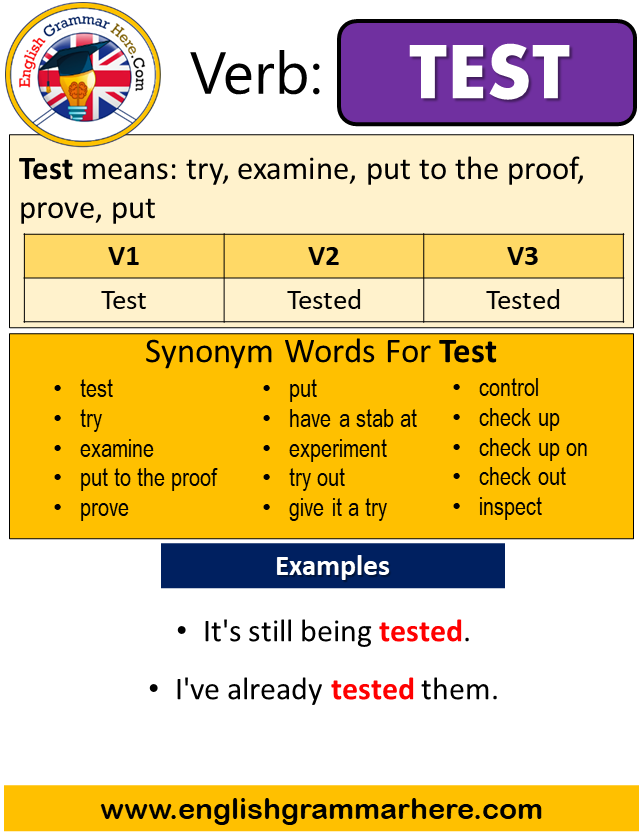
Test Past Simple in English, Simple Past Tense of Test, Past Participle
Simple Tense Continuous Tense Perfect Tense Perfect Continuous Tense Conditional Imperative Verb forms Trainer Settings Click to start Conjugation Simple Tense Present Simple I try you try he, she tries we try you try they try Past Simple I tried you tried he, she tried we tried you tried they tried Future Simple I will try

Simple Past Tense
Simple past english tried Past participle english tried More information Full conjugation of "to try" Translations for "to try" Full conjugation of "to try" Indicative Present I try you try he/she/it tries we try you try they try Present continuous
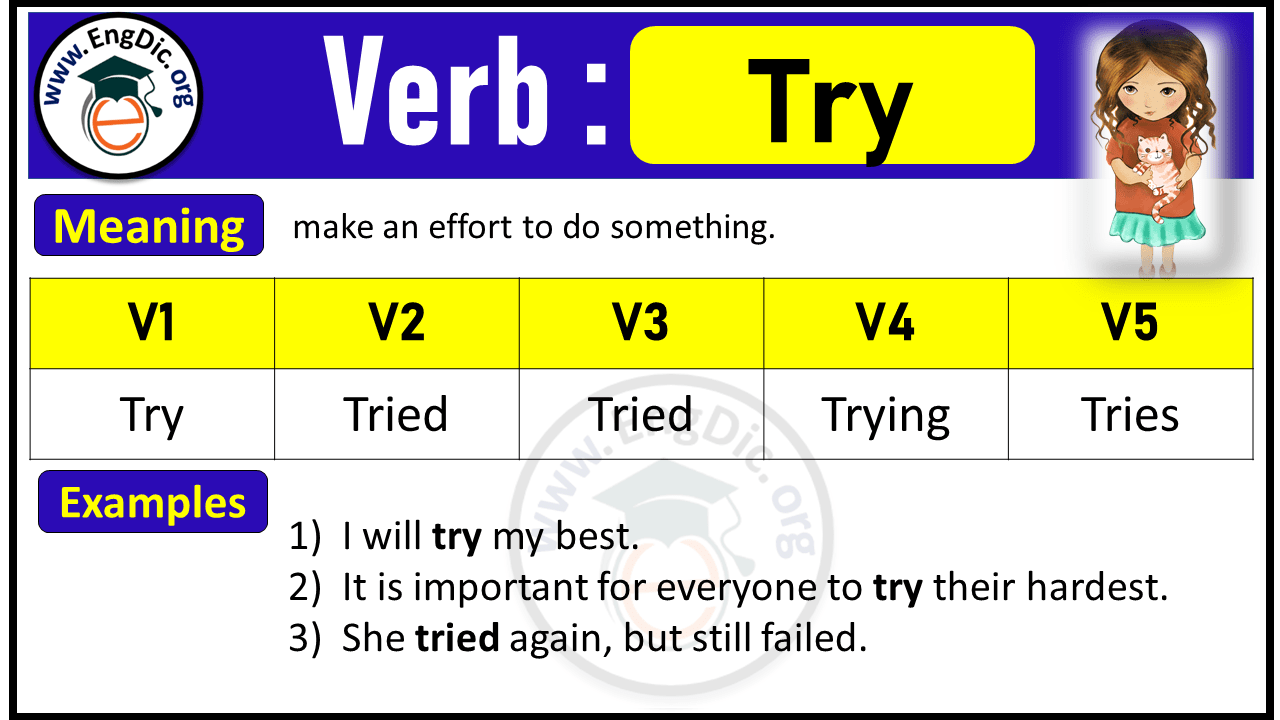
Try Verb Forms Past Tense and Past Participle (V1 V2 V3) EngDic
Common mistakes with Past Simple (and how to avoid them!) 1. Using the past simple instead of the present perfect. For events that started in the past and are still ongoing now, learners sometimes try to use the past simple. However, the correct tense to use in this situation is the present perfect. I didn't finish my homework yet.

Past Tense Of Read, Past Participle Form of Read V1 V2 V3 Past Tense of
What is the past tense of "try?" Most commonly, the past tense of the word "try" is "tried." Although the word form will change based on its participle. And the sentence where it's used. For example, referencing "try" in the present participle form will change it to "trying," but in the infinitive form, will be "try."